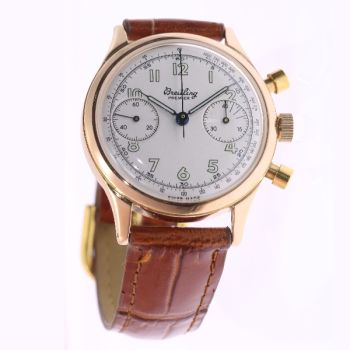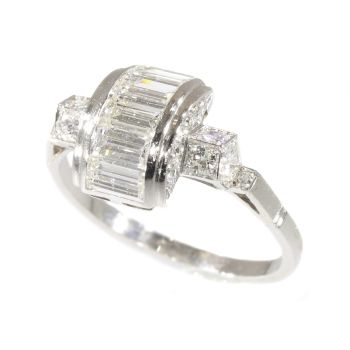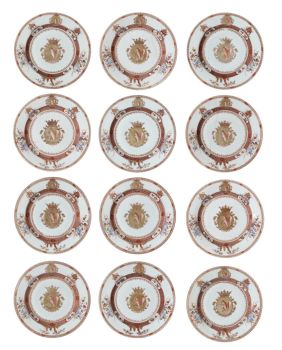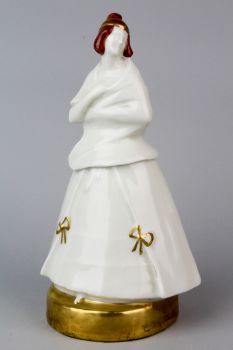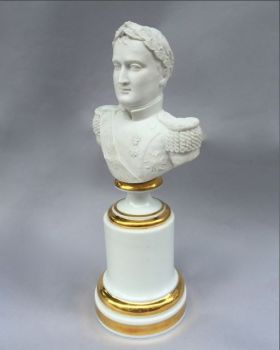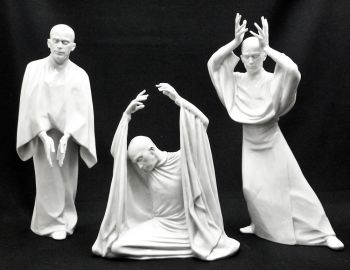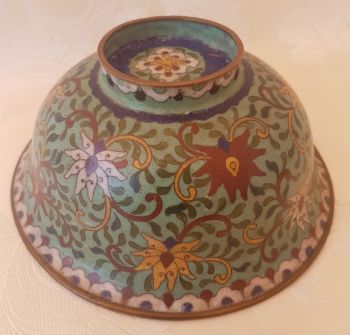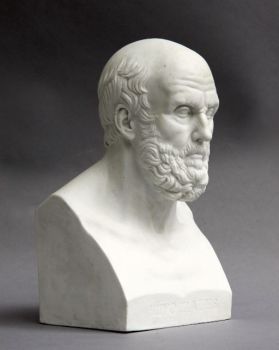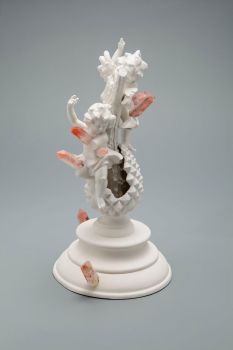Four rare Chinese porcelain blue and white footed salt cellars, Qianlong period, c. 1740-1760. 1740 - 1760
Artiste Inconnu
PorcelainePorcelaine chinoise
12 cm, ø 8.60 cm
ConditionGood
Prix sur demande
Menken Works of Art
- Sur l'oeuvre d'artA collection of four rare Chinese porcelain blue and white footed salt cellars.
Qianlong period (1736-1795), c. 1740-1760.
All are of ogee shape with a bulbous base resting on three scrolled feet. Three of the four salts are identical with a floral border on the rim, the body with a continuous landscape scene of plants, rocks and two cranes.
One of the four salts is of slightly larger size and has a different decoration with flowering plants and trees, lacking the two cranes. All four salts have brown-dressed rims, the pedestal and feet have been moulded with grooves to make swirling line patterns.
Ref:
The shape of these salt cellars is highly unusual, a small group is recorded, with slightly varying decoration, all derived from Meissen porcelain. Round, rimmed salts with baroque scroll bases were designed for the very grand Sulkowski service made at Meissen 1735-1738. For the Meissen example see The Cleveland Museum of Art, inv. no. 1917.624.1.
For similar Qianlong examples, see:
Frelinghuysen Collection, illustrated in Four Centuries of Blue & White (Becky Macguire, 2023), p. 108, no. 71.
A similar salt was also illustrated in Out of the Ordinary (Jorge Welsh, Luísa Vinhais, 2014), pp. 69, 78, no. 19.
Reeves Center Collection at Washington and Lee University, inv. no. 1994.10.2, illustrated in Chinese Export Porcelain in the Reeves Center Collection (Litzenburg and Bailey, 2003), p. 219, pl. 223.
Dimensions:
Largest salt: Height 12 cm, diameter 8.6 cm.
Three smaller salts: Height 11.5 cm, diameter 8.8 cm.
Condition:
All are in excellent shape except for one salt with one broken and reglued foot.
Inv. No: MW119 - Sur l'artiste
Il peut arriver qu'un artiste ou un créateur soit inconnu.
Certaines œuvres ne doivent pas être déterminées par qui elles sont faites ou elles sont faites par (un groupe d') artisans. Les exemples sont des statues de l'Antiquité, des meubles, des miroirs ou des signatures qui ne sont pas claires ou lisibles, mais aussi certaines œuvres ne sont pas signées du tout.
Vous pouvez également trouver la description suivante :
•"Attribué à …." A leur avis probablement une oeuvre de l'artiste, au moins en partie
•« Atelier de …. ou « Atelier de » À leur avis, une œuvre exécutée dans l'atelier ou l'atelier de l'artiste, éventuellement sous sa direction
•« Cercle de… ». A leur avis une oeuvre de la période de l'artiste témoignant de son influence, étroitement associée à l'artiste mais pas forcément son élève
•« Style de … ». ou "Suiveur de ...." Selon eux, une œuvre exécutée dans le style de l'artiste mais pas nécessairement par un élève ; peut être contemporain ou presque contemporain
•« Manière de… ». A leur avis une oeuvre dans le style de l'artiste mais d'une date plus tardive
•"Après …." A leur avis une copie (quelle qu'en soit la date) d'une oeuvre de l'artiste
•« Signé… », « Daté… ». ou « Inscrit » À leur avis, l'œuvre a été signée/datée/inscrite par l'artiste. L'ajout d'un point d'interrogation indique un élément de doute
• "Avec signature ….", "Avec date ….", "Avec inscription …." ou "Porte signature/date/inscription" à leur avis la signature/date/inscription a été ajoutée par quelqu'un d'autre que l'artiste
Êtes-vous intéressé par l'achat de cette oeuvre?
Artwork details
Related artworks
Artiste Inconnu
François-Théodore Legras – Tall “Fleurs de Pommier” apple blossoms vase1900 - 1909
Prix sur demandeAntiques Emporium
1 - 4 / 12Artiste Inconnu
Series of 6 Chinese cups and saucers (Yongzheng period)1722 - 1735
Prix sur demandeKuipers Kunst & Antiek
1 - 4 / 17- 1 - 4 / 24
Artiste Inconnu
Series of 6 Chinese cups and saucers (Yongzheng period)1722 - 1735
Prix sur demandeKuipers Kunst & Antiek
1 - 4 / 24Artiste Inconnu
A white jade ‘Lotus Seedpod and Bug’ carving, Qing dynasty, 18th century18th century
Prix sur demandeMenken Works of Art
Artiste Inconnu
Chinese gilt bronze censer, Xuande mark, 18th century, Qing dynasty18th century
Prix sur demandeMenken Works of Art
1 - 4 / 12










